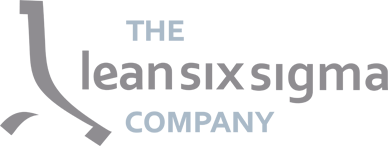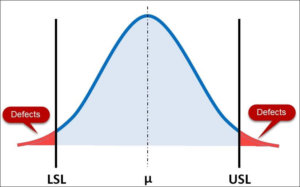What is Lean?
Lean is a very powerful philosophy focused on elimination of waste and maximizing value to customer. History of Lean goes back to early 20th century. When applying lean concepts, organizations must first identify what its’ customers perceive as value. Then identification of the steps in business processes, elimination of non-value adding activities, creation of continuous flow in the remaining steps, implementation of pull system when the flow is not possible etc. need to be done in a continuous basis with systematic problem solving approach. Companies are increasingly adopting lean manufacturing practices to enhance their competitiveness by increasing flexibility, lower cost and improved product quality.
Six sigma is a project based approach to improve quality through process variation reduction. It is a customer focused data driven approach to drive processes towards a very high quality level of 3.4 defects per million opportunities. Six Sigma helps organizations to deliver high quality, reliable products and services to end customer.
Why Lean Six Sigma is Important in Healthcare?
In crisis situations like COVID 19 pandemic, the ‘necessity’ of using Lean Six Sigma techniques in healthcare is extremely high specially in terms of quality, patient’s safety, cost, waiting time and staff satisfaction. Moreover, hospitals are facing an increasing external pressure and challenges to deliver an extremely high quality service in a limited time with high flexibility. Lean Six Sigma methodology can help the entire healthcare system to overcome these challenges throughout end to end process from patient admission to discharge.
In the healthcare system, patient is the primary customer. Key performance indicators should be aligned to timely deliverables of high quality services to the patient. Firstly, all problems which are experienced by the patients and employees should be identified. Then after, problems can be eliminated by analyzing root causes and taking actions.
Applying Lean in Healthcare
Lean in healthcare includes define the term ‘Value’ considering customer expectations, identifying the value stream, eliminating non value added activities and create value from beginning to end of the process. There are 8 types of waste activities in Lean and let’s discuss them using examples from healthcare industry.
Transportation
Unnecessarily transferring of materials from one location to another location. In healthcare, this can be seen when transferring patients to new rooms, lab tests etc. If there is a proper sequence to carry patient for test, unnecessary movements can be reduced.
Inventory
Overstocking drugs are waste. Inventory should be determined considering how much needed for a set period of time considering the historical demand and future projections. Pull system, Kanban, Andon systems are suitable lean tools for maintain inventory efficiently.
Motion
This is unnecessary motions in the process. The work area should be designed such a way that each movement adds value to the specific processes. Hospital function need to improve by eliminating movement of staff by searching for drugs, surgery tools, transferring patients from one place to another, unnecessary document movements etc. 5S implementation, proper layout designing (C shape, U shape, Circle) are ideal solutions to overcome this problem.
Waiting
Most of the time, we can see long queues in the hospitals at OPD, theater, x ray room etc. Also we have seen doctors are waiting for medical reports from labs. SMED is one effective solution to reduce these issues.
Overproduction
Overproduction occurs when you produce goods and services when there is no requirement. Unnecessary diagnostic tests, extra staff in off peak hours, ordering meals more than the requirement are good examples from healthcare. Proper planning and standardized processes will help to eliminate these wastes.
Over processing
Duplicate or redundant operations. In healthcare system you may have seen many traditional less efficient practices done by staff when there are more advanced effective methods are available. These can be eliminated through proper training and cultural changes.
Defects
Defects occur when you produce goods and services lower than the quality standards. Incomplete, missing or incorrect information and instructions, poor labeling of tests, prescribing a wrong medicine, mistakes in operation are some of these examples. Considering the criticality, in healthcare industry we cannot tolerate ‘Defects’ as sometimes it might end up losing a life. Standard operating procedures, improve knowledge, data driven approaches always can reduce mistakes.
Underutilization of Staff
Underutilization of people’s talents, skills and knowledge and lack of sharing knowledge between hospital staff are some of the examples. Implementing a good knowledge sharing system always useful!
Six Sigma on Healthcare (DMAIC Approach)
Six Sigma refers to DMAIC (Define, Measure, Analysis, Improve, Control) a methodology to improve quality through reducing variation in the process. You may have already experienced unsatisfied patients due to inconsistent longer lead time in services in various parts of healthcare services and number of errors in surgeries, medicines etc. Six Sigma is one of the most effective and popular data driven problem solving approach to overcome these challenges.



To improve the usability of our website we use cookies.
More Information Close